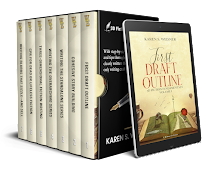Austrian archduchess and French queen consort Marie Antoinette was said by the French revolutionary "Sans-Culottes" to have suggested that the French peasants who could not afford their daily bread ought to eat cake.
Were the sans-culottes without their lower body garments on the "liar liar pants on fire" principle? That is not what history says, of course, nor what Wikipedia says, but to my knowledge, Wikipedia may be convenient but it is by no means accurate.
Would it be appalling for a modern day Marie Antoinette to advocate for the eating of kale instead of cake?
Caldwell B.Esselstyn advocated strongly for eating kale as part of a heart-health-restoration regimen, but even he and his wife tended not to eat the stalks, and you can eat them, you just need to cut them finely, cook them well, and disguise them in some other well-cooked dish, such as curry.
Here's a conspiracy theory for you: the Puritans killed the so-called witches of Salem because the ladies knew too much about free, wild herbs.
By the way, "Conspiracy Theory", IMHO, is a much over-used term. Sometimes, what they call a "theory" is indeed a conspiracy and not theoretical at all.
And so, to the "weeds". My paternal grandmother used to say, "Waste not, want not". She meant, if you don't waste food and other resources, you will not go hungry. My maternal grandfather used to save the electricity needed to boil an electric kettle by only adding to the kettle exactly the amount of water needed for his one mug of tea (or coffee).
Sorry about the tautology, but some folks think of a saucepan when I say "kettle".
One can economise on electricity, if one so wishes, by making sure to cook several dishes at the same time in the oven, when it is on. The same principle applies to what one puts in a saucepan of boiling water. For instance, you can layer veggies in a single saucepan, with the carrots and brussels sprouts and mukimame beans at the bottom; then mangetout beans, sugar snap peas and cauliflower chunks; and broccoli florets and asparagus on the top above water level in the steam.
As I write, I am boiling a sweet potato in with my beetroots. The sweet potato brings up the water level, so I use les water, it takes on pretty stains from the beets, so has a tequila sunrise appearance when cut in half for rewarming in the oven, and it adds extra nutrients to the beet-water stock which I will set aside, cool, and later use to boil red beans or pinto beans. (Often, I will add barley or rice in with the beans.)
For further economy on electricity, cook beets and beans and rice etc early in the morning, on cheap rate electricity. If you have a solid hot plate, it holds the heat at no additional cost, so you can bring your pot to the boil and turn it off, go away for half and hour or an hour, and bring it back to the boil again. You'd be amazed what free residual heat will do.
What do you throw away? Are you composting food that you could be eating?
Do you know that you can eat the green parts of leeks and of green onions (no different from chives, but a little coarser), beetroot leaves, carrot leaves, broccoli stalks, cauliflower stalks, dandelions (from root to flower)?
When I buy carrots, and they come with leaves, I wash them, cut off the tops, store the carrots upright in a mug in the fridge, maybe with a little water. Then, I take my favorite kitchen scissors (I have a fav pair, and two not-so-beloved pairs that I keep because they are multi-functional with parts for opening lids and snapping off bottle tops), and I snip the carrot leaflets off the stalks. I do discard the stalks...there's just too much roughage there.
I store the leaves in a sealed pot. If I have too many, I freeze some of them.
Here's a recipe for oyster stuffing made from stale bread and carrot leaves, aka weeds.
INGREDIENTS




































We always cook the green stalks of green onions. They're my favorite part, actually. And I enjoy eating celery leaves (the only part of celery that has much taste, IMO).
ReplyDeleteThank you, Margaret. I agree about celery leaves, but not about the lack of taste of the rest of the celery. I usually fry (sautee) celery with leek and onion and cabbage.
ReplyDelete